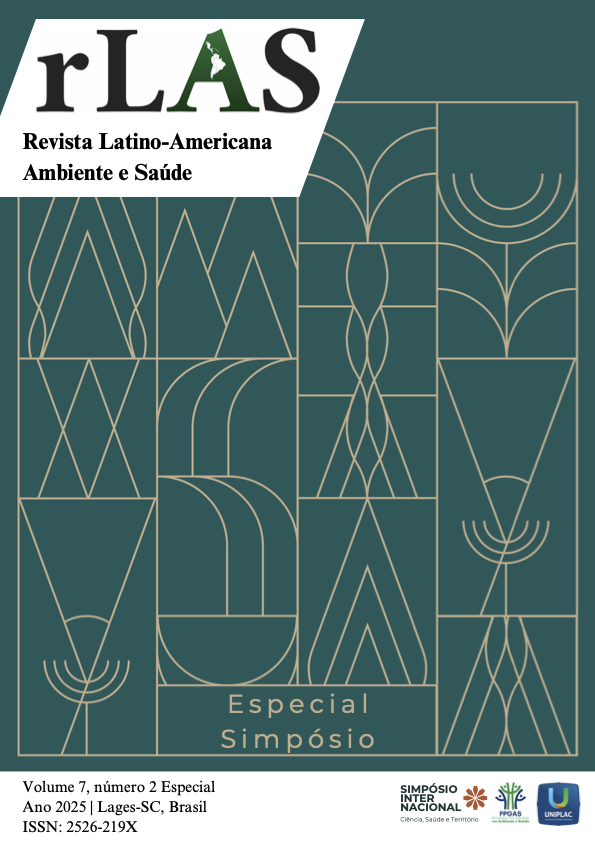Aplicação dos estímulos sensório-motores em recém-nascidos na unidade de tratamento intensivo neonatal
Palabras clave:
Terapia intensiva neonatal, Desempenho sensório-motor, Estimulação precoceResumen
Este estudo teve como objetivo identificar os métodos de estimulação sensório-motora utilizados em recém-nascidos internados na Unidade de Terapia Intensiva Neonatal (UTIN), considerando sua vulnerabilidade a complicações no desenvolvimento infantil. Trata-se de uma revisão narrativa da literatura com abordagem qualitativa. Os achados revelam que intervenções sensório-motoras precoces promovem benefícios significativos, como a melhora nas respostas à dor e ao estresse, além da redução média de 7,3 dias no tempo de internação hospitalar. A estimulação sensorial adequada é essencial, uma vez que o ambiente das UTINs expõe os recém-nascidos a estímulos distintos dos vivenciados no útero, o que pode comprometer seu desenvolvimento neurológico. Estudos com neuroimagem funcional evidenciam alterações cerebrais positivas em neonatos que receberam esse tipo de cuidado. Entre as estratégias mais eficazes, destaca-se o Método Canguru, que favorece o vínculo afetivo, a estabilidade fisiológica e o desenvolvimento neurológico do bebê. A implementação efetiva dessas intervenções requer uma atuação multiprofissional integrada, com protocolos estruturados e individualizados. Além disso, a participação ativa da família é fundamental para potencializar os efeitos positivos da estimulação precoce.
Citas
ALTIMIER, L.; PHILLIPS, R. The Neonatal Integrative Developmental Care Model: Advanced Clinical Applications of the Seven Core Measures for Neuroprotective Family-centered Developmental Care. Newborn and Infant Nursing Reviews, [s. l.], v. 16, n. 4, p. 230–244, 2016.
ARAÚJO, A.; EICKMANN, S.; COUTINHO, S. Fatores associados ao atraso do desenvolvimento motor de crianças prematuras internadas em unidade de neonatologia. Revista Brasileira de Saúde Materno Infantil, [s. l.], v. 13, n. 2, p. 119–128, 2013.
BATISTA, G. et al. Unidade de terapia intensiva neonatal (utin): A importância na sobrevida dos recém-nascidos. Research, Society and Development, [s. l.], v. 10, n. 6, p. e40910615884, 2021.
BELTRÁN, M. I. et al. Sensory-based interventions in the NICU: systematic review of effects on preterm brain development. Pediatric Research, [s. l.], v. 92, n. 1, p. 47–60, 2022.
DA SILVEIRA, K. et al. Principais Causas de Internamento na UTI Neonatal: Uma pesquisa em um hospital do oeste do paraná. Acta Elit Salutis, [s. l.], v. 7, n. 1, 2022.
DOS SANTOS, A. C. S. et al. Breastfeeding at discharge and in the third stage of the Kangaroo Mother Care among hospitalized preterm infants. Revista da Escola de Enfermagem da USP, [s. l.], v. 58, p. e20230383, 2024.
GONÇALVES, M. C. Prematuridade: desenvolvimento neurológico e motor avaliação e tratamento. Thieme Revinter, 2012.
GRAVEN, S. N.; BROWNE, J. V. Sensory development in the fetus, neonate, and infant: introduction and overview. Newborn and Infant Nursing Reviews, [s. l.], v. 8, n. 4, p. 169–172, 2008.
JANVIER, A.; LANTOS, J. Delivery room practices for extremely preterm infants: the harms of the gestational age label. Archives of Disease in Childhood - Fetal and Neonatal Edition, [s. l.], v. 101, n. 5, p. F375–F376, 2016.
JOHNSTON, C. et al. First Brazilian recommendation on physiotherapy with sensory motor stimulation in newborns and infants in the intensive care unit. Critical Care Science, [s. l.], v. 33, n. 1, 2021.
KORETI, M.; MUNTODE GHARDE, P. A Narrative review of kangaroo mother care (KMC) and its effects on and benefits for low birth weight (LBW) babies. Cureus, [s. l.], 2022.
MACHADO, A. et al. Processamento sensorial no período da infância em crianças nascidas pré-termo: revisão sistemática. Revista Paulista de Pediatria, [s. l.], v. 35, n. 1, p. 92–101, 2017.
MORAN, C. A. et al. Visual stimulation in the neonatal intensive care unit: A systematic literature review. Journal of Child Health Care, [s. l.], p. 13674935241227344, 2024.
NARCISO, L. M.; BELEZA, L. O.; IMOTO, A. M. The effectiveness of Kangaroo Mother Care in hospitalization period of preterm and low birth weight infants: systematic review and meta-analysis. Jornal de Pediatria, [s. l.], v. 98, n. 2, p. 117–125, 2022.
RODRIGUEZ GONZALEZ, P. et al. Effectiveness of oral sensory-motor stimulation in premature infants in the Neonatal Intensive Care Unit (NICU) Systematic Review. Children, [s. l.], v. 8, n. 9, p. 758, 2021.
ROTHER, Edna Terezinha. Revisão sistemática X revisão narrativa. Acta Paulista de Enfermagem, [s. l.], v. 20, n. 2, p. v–vi, 2007.
SANTOS, M. H.; AZEVEDO FILHO, F. M. Benefícios do método Mãe Canguru em recém-nascidos pré-termo ou baixo peso: uma revisão da literatura - doi: 10.5102/ucs.v14i1.3477. Universitas: Ciências da Saúde, [s. l.], v. 14, n. 1, p. 67–76, 2016.
SPITTLE, A. J. et al. Motor trajectories from birth to 5 years of children born at less than 30 weeks’ gestation: early predictors and functional implications. Protocol for a prospective cohort study. Journal of Physiotherapy, [s. l.], v. 62, n. 4, p. 222–223, 2016.
SPITTLE, A.; TREYVAUD, K. The role of early developmental intervention to influence neurobehavioral outcomes of children born preterm. Seminars in Perinatology, [s. l.], v. 40, n. 8, p. 542–548, 2016.
SWEENEY, J. K.; HERIZA, C. B.; BLANCHARD, Y. Neonatal Physical Therapy. Part I: Clinical Competencies and Neonatal Intensive Care Unit Clinical Training Models. Pediatric Physical Therapy, [s. l.], v. 21, n. 4, p. 296–307, 2009.
ZIRPOLI, D. B. et al. Benefits of the Kangaroo Method: An Integrative Literature Review. Revista de Pesquisa Cuidado é Fundamental Online, [s. l.], v. 11, n. 2, p. 547–554, 2019.


